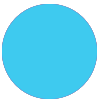I don’t understand how adding a filter to a zap qualifies it as having been changed too much.
thereby preventing replay in case of error, and making the retroactive fixing of zaps a nightmare.
Can somebody in the know please explain this design choice? I’m only talking about adding a filter,
which is not destructive, and will either cause the next (unchanged) step to execute, or not.
Thanks for any insight.



